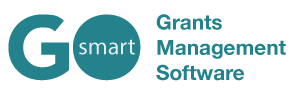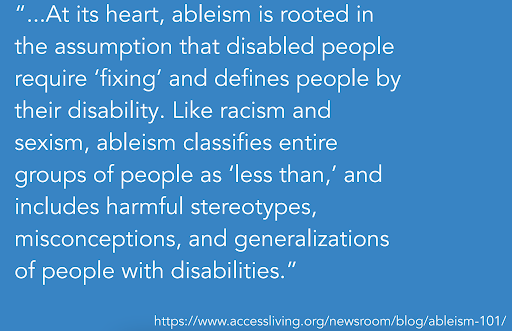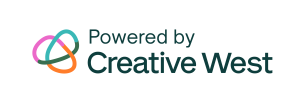GO Smart is one of five innovative web services for arts, culture, and the creative economy developed and managed by the Western States Arts Federation (WESTAF). Recently, the GO Smart team as well as all WESTAF staff, participated in a professional development session led by DisArt on the many ways that the disability community intersects with arts and culture. DisArt is both a production company and an arts and culture organization that creates public art events to cultivate and communicate a disability culture. DisArt works to ensure the full and equitable participation of all disabled people through the belief that expressions of a disability culture can transform communities from awareness, to understanding, and ultimately, to belonging.
During the session, DisArt co-founders Christopher Smit and Jill Vyn facilitated an open discussion that took the team on a journey through four different models of disability, the disability civil rights movement, representation, and intersectionality in the disability community. We learned so much from our time with DisArt and wanted to share some highlights from the session, which included a brief look into the history of disabled communities and, through disability civil rights movements, how they are changing society’s perspective of their community for the better.
Disabled people have historically been placed into systems that intrinsically separate them from other communities in ways that were designed to “help” them. Identifying tactics of separation that are found within certain models of disability can provide more insight into how these models continue to perpetuate this intrinsic separation:
Charity
Within the charity model, disabled people are considered to be victims of their circumstances and treated differently due to their disabilities, creating a sense of “us/them.”
Medical
This model places disabled people in a box that doesn’t allow for variations in the mind or body when defining health. There is also a narrative around this definition of health that places the responsibility on the individual to be “fixed” or “cured.”
Leveraging the other two models of disability in your organization’s programming is a stepping stone on the road to creating a sense of community and collaboration between disabled and non-disabled people, allowing the disabled community to have the safety, opportunity and space to openly express themselves.
Social
A social model encourages society to see disability as a complex lived experience, placing responsibility on society instead of the individual, and working toward equal access for disabled people as more than just a moral issue but a human rights issue.
Affirmative
Affirmation around disability introduces the belief that our differences enrich our life experiences and are something to be celebrated while rejecting negative stereotypes surrounding disability. This leads to a sense of inclusion, acceptance, and pride within the disability community.
We are excited to take what we have learned during this session with DisArt about disability history and apply it to our work. We are committed to professional and personal growth through deepening our understanding of the disability community and other cultural identities. Through these efforts, we hope to further the meaningful expansion of our audience while amplifying our impact in the communities we serve.
In that spirit, GO Smart is teaming up with a fellow WESTAF web service, ZAPP, to host a webinar on grantmaking best practices on Thursday, November 18 at 1 p.m. MST. Click here to register for the webinar. We hope to see you there!



